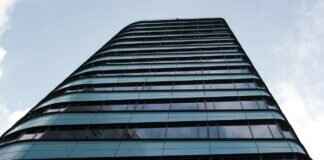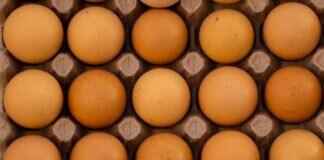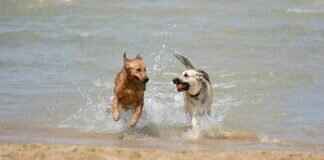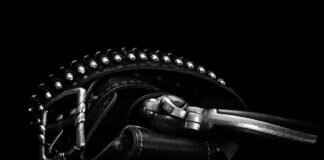This article provides effective methods and tips for cleaning leaves from artificial grass while preserving its integrity. Explore various techniques to maintain your lawn’s appearance without causing damage.
Understanding Artificial Grass Composition
Before embarking on the cleaning process, it’s crucial to understand the composition of artificial grass. Typically made from synthetic fibers such as polyethylene or polypropylene, artificial grass mimics the appearance of natural grass. These materials are designed to withstand various weather conditions, but they can be sensitive to certain cleaning methods. Understanding these materials helps in choosing the right cleaning techniques that won’t compromise the integrity of your lawn.
Why You Should Regularly Clean Artificial Grass
Regular cleaning is essential for maintaining both the aesthetic and functional qualities of artificial grass. Accumulated leaves and debris can lead to hygiene issues, as they can harbor mold and bacteria. Moreover, regular maintenance enhances the lifespan of your grass, ensuring it remains vibrant and visually appealing. By investing time in cleaning, you can avoid costly replacements and enjoy a beautiful lawn year-round.
Tools Needed for Cleaning Artificial Grass
Using the right tools can significantly enhance the efficiency of your cleaning efforts. Essential tools include:
- Leaf Blower: Ideal for quickly removing leaves without physical contact.
- Soft Broom: Perfect for gently sweeping away smaller debris.
- Rake: A plastic rake can help lift leaves without damaging grass fibers.
- Garden Hose: Useful for rinsing off any remaining dirt or debris.
Best Methods for Removing Leaves from Artificial Grass
There are several effective methods to remove leaves without damaging artificial grass:
Using a Leaf Blower
A leaf blower can be an efficient tool for cleaning artificial grass. To use it properly, ensure that you hold the blower at a safe distance to avoid displacing the grass fibers. Aim to blow leaves in one direction, making collection easier. This method is quick and minimizes the risk of damage.
Manual Raking Techniques
Manual raking is another effective method for leaf removal. Use a plastic rake with rounded edges to gently lift leaves without pulling on the grass fibers. Always rake in the direction of the grass blades to avoid any potential damage. This technique allows for a thorough clean while preserving the lawn’s integrity.
How to Prevent Leaves from Accumulating
Prevention is key to maintaining a clean lawn. Consider the following tips:
- Strategic Planting: Plant trees and shrubs away from your artificial grass to reduce leaf drop.
- Regular Maintenance: Schedule regular cleaning sessions to prevent leaves from piling up.
- Install Leaf Guards: If feasible, install barriers or guards to minimize leaf accumulation.
Cleaning Solutions for Stains and Debris
Sometimes, leaves can leave behind stains or debris. For effective cleaning, consider the following solutions:
Using Water and Mild Detergents
Water and mild detergents can effectively clean artificial grass. Mix a small amount of detergent with water and apply it using a soft brush. Rinse thoroughly to ensure no residue remains, which could attract more dirt.
Commercial Cleaning Products
There are various commercial products designed specifically for cleaning artificial grass. Look for products that are non-toxic and safe for pets and children. Always follow the manufacturer’s instructions for the best results.
Seasonal Maintenance Tips for Artificial Grass
Seasonal changes can greatly affect how leaves accumulate on artificial grass. In the fall, for example, it’s essential to increase cleaning frequency to manage leaf buildup. During spring and summer, regular checks can help maintain cleanliness and prevent debris from settling. Adjust your cleaning routine based on the season to keep your lawn looking pristine.
Signs Your Artificial Grass Needs Professional Cleaning
While regular cleaning is essential, certain situations may require professional intervention. Signs that indicate it’s time to call in the experts include:
- Persistent Stains: If stains remain after regular cleaning efforts.
- Odors: Unpleasant smells can indicate deeper issues.
- Visible Damage: If you notice fraying or discoloration.
By following these tips and using the right tools, you can effectively maintain your artificial grass, ensuring it stays beautiful and functional for years to come.

Understanding Artificial Grass Composition
Understanding the composition of artificial grass is crucial for effective maintenance and cleaning. Artificial grass, also known as synthetic turf, is made from a combination of materials that contribute to its durability, appearance, and functionality. In this section, we will delve into the various components that make up artificial grass and how these materials influence the cleaning methods you should employ.
Artificial grass is primarily composed of three key materials:
- Fibers: The most visible component, these fibers are typically made from polyethylene, polypropylene, or nylon. Polyethylene is the most commonly used due to its soft texture and durability. Nylon, while more robust, can be less common due to its higher cost.
- Backing: The backing material provides stability and support to the grass fibers. It is usually made from a combination of polyurethane and latex, which helps to keep the fibers in place and allows for proper drainage of water.
- Infill: This is the material that is spread between the grass fibers to provide cushioning and support. Common infill materials include sand, rubber, or a mixture of both. The infill helps to keep the fibers upright and mimics the feel of natural grass.
The materials used in artificial grass play a significant role in determining the appropriate cleaning methods. For instance:
- Resistance to Stains: Certain fibers, like polyethylene, are more resistant to staining and fading compared to others. This means that less aggressive cleaning methods can be employed on these types of fibers.
- Drainage Considerations: The backing material affects how water drains through the grass. A well-draining backing will allow for easier removal of debris and less chance of mold or mildew forming, which can influence the frequency and type of cleaning required.
- Infill Material: The type of infill used can also dictate cleaning methods. For example, rubber infill may require different cleaning solutions compared to sand infill, as rubber can break down over time and may need specialized cleaning products to maintain its integrity.
Understanding the composition of your artificial grass is vital for several reasons:
- Customized Cleaning: Knowing the materials allows homeowners to select the most effective cleaning solutions and methods, ensuring they do not damage the grass.
- Longevity: Proper maintenance tailored to the specific materials can extend the lifespan of the artificial grass, saving costs on replacements.
- Preservation of Appearance: Different materials react differently to sunlight, water, and cleaning agents. A thorough understanding ensures the grass retains its vibrant appearance over time.
In summary, the composition of artificial grass significantly influences how it should be maintained and cleaned. By understanding the materials involved, homeowners can make informed decisions about their cleaning methods, ensuring their synthetic lawn remains in excellent condition for years to come.
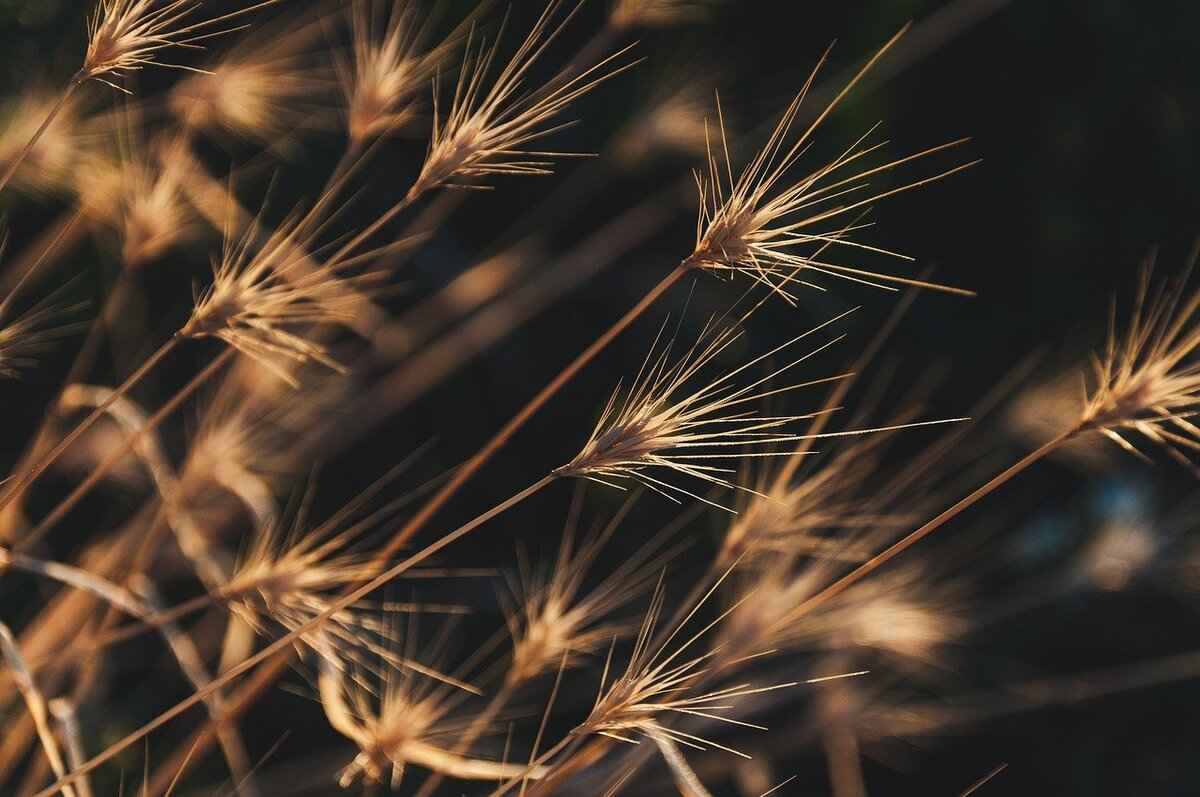
Why You Should Regularly Clean Artificial Grass
Maintaining artificial grass is not just about aesthetics; it plays a crucial role in hygiene and longevity. Regular cleaning is essential for several reasons, which we will explore in detail below.
- Hygiene and Health: One of the primary reasons for regularly cleaning artificial grass is to ensure a hygienic environment. Over time, dirt, debris, and organic matter like leaves can accumulate, creating a breeding ground for bacteria and pests. Regular cleaning helps eliminate these potential health hazards, ensuring that your lawn remains a safe space for children and pets.
- Preservation of Aesthetic Appeal: Artificial grass is designed to mimic the look of natural grass. However, without regular maintenance, it can quickly become discolored and unattractive. Cleaning the surface not only removes unsightly debris but also helps maintain the vibrant color and texture of the grass fibers, ensuring your lawn looks its best year-round.
- Longevity of the Grass: Just like any other investment, artificial grass requires care to ensure its longevity. Regular cleaning removes particles that can cause wear and tear on the grass fibers. By keeping the surface clean, you can significantly extend the lifespan of your artificial turf, saving you money on replacements or repairs in the long run.
- Improved Drainage: One often-overlooked aspect of artificial grass maintenance is drainage. Leaves and debris can clog drainage holes, leading to water pooling on the surface. Regular cleaning helps to maintain proper drainage, preventing issues such as mold growth and unpleasant odors.
- Enhanced Performance: For those who use artificial grass for sports or recreational activities, regular cleaning is vital. A clean surface offers better traction and reduces the risk of slips and falls. This is especially important for families with active children or for facilities that host sports events.
In summary, the benefits of regularly cleaning artificial grass are multifaceted. From promoting hygiene and enhancing aesthetic appeal to ensuring longevity and improved performance, regular maintenance is crucial. By investing time in cleaning your artificial lawn, you’re not only preserving its beauty but also enhancing its functionality, making it a worthwhile endeavor for any homeowner.
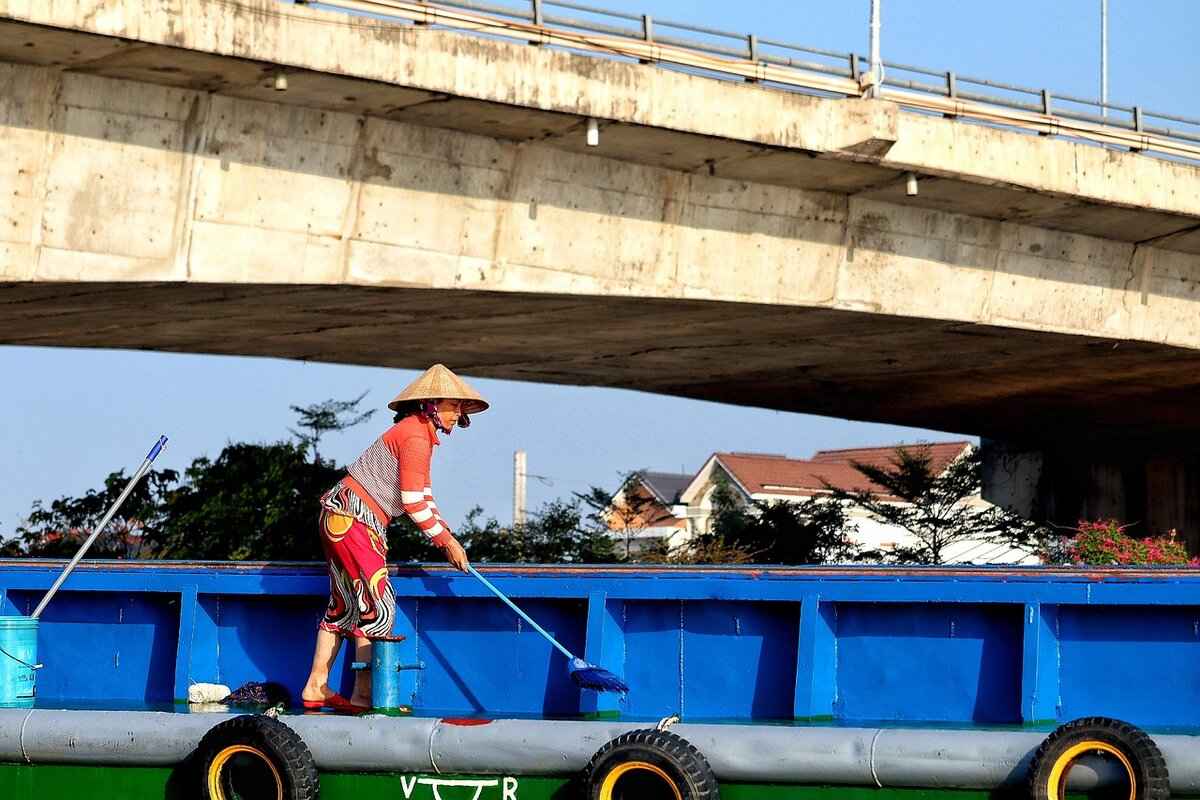
Tools Needed for Cleaning Artificial Grass
Maintaining artificial grass requires the right tools to ensure effective cleaning without damaging the fibers. The following section outlines essential tools and equipment that can significantly enhance the cleaning process, making it more efficient and straightforward.
When it comes to cleaning artificial grass, having the appropriate tools at your disposal can make a world of difference. Here are some of the most effective tools you should consider:
- Leaf Blower: This powerful tool is ideal for quickly removing leaves and debris from your artificial lawn. It allows for fast cleaning without the need for manual labor. However, it is crucial to use it at a low setting to avoid damaging the grass fibers.
- Soft Bristle Broom: A soft bristle broom is perfect for brushing away dirt and debris without harming the grass. It helps to lift leaves and other organic matter while maintaining the integrity of the grass fibers.
- Rake: A lightweight rake can be useful for gathering larger piles of leaves. Opt for a plastic rake to minimize the risk of snagging or tearing the grass.
- Garden Hose: A garden hose with a spray nozzle is essential for rinsing off any remaining dirt or debris after initial cleaning. It can also be used to wash away any stains that may have accumulated.
- Mild Detergent: For deeper cleaning, a mild detergent mixed with water can help remove stubborn stains. Make sure to select a product that is safe for artificial grass to avoid damaging it.
- Vacuum Cleaner: A vacuum cleaner designed for outdoor use can be an effective tool for sucking up small debris and leaves. Ensure it has a setting suitable for artificial grass.
Utilizing the right tools is essential not only for efficiency but also for the longevity of your artificial grass. Using inappropriate tools can lead to damage, such as tearing or fraying of the grass fibers, which can compromise its aesthetic appeal and functionality.
Moreover, the right tools can save you time and effort. For instance, a leaf blower can clear a large area in a fraction of the time it would take to do so manually. Similarly, a soft bristle broom can help you maintain the grass’s appearance without the risk of damage.
When cleaning artificial grass, it’s important to follow some best practices to ensure the process is effective and safe:
- Regular Maintenance: Schedule regular cleaning sessions to prevent the buildup of leaves and debris. This will help maintain the appearance and hygiene of your lawn.
- Gentle Techniques: Always use gentle techniques when cleaning. Avoid sharp tools that could tear the grass fibers.
- Check for Damage: Regularly inspect your artificial grass for signs of wear and tear. Early detection can prevent further damage.
In summary, having the right tools for cleaning artificial grass is crucial for maintaining its appearance and longevity. By investing in quality equipment and following best practices, you can ensure your artificial lawn remains beautiful and functional for years to come.

Best Methods for Removing Leaves from Artificial Grass
Maintaining the pristine appearance of artificial grass can be challenging, especially when leaves and debris accumulate. Fortunately, there are several effective methods for removing leaves without damaging the grass fibers. This section delves into the best techniques to ensure your artificial lawn remains clean and vibrant.
When it comes to keeping your artificial grass free from leaves, using the right methods is crucial to avoid causing any harm to the turf. Below are some of the most recommended techniques:
- Leaf Blower: A leaf blower is one of the most efficient tools for removing leaves from artificial grass. When using a leaf blower, it’s important to adjust the speed to a lower setting to prevent the strong air from displacing the grass fibers. Start from one end of your lawn and work your way systematically to the other end. This method not only clears the leaves quickly but also helps to fluff up the grass fibers.
- Manual Raking: If you prefer a more hands-on approach, manual raking can be effective. Use a rake with plastic tines, as metal rakes can potentially damage the grass. Gently rake the surface to gather leaves, ensuring you don’t pull too hard to avoid uprooting the grass. Raking can also help remove small debris that might get trapped in the fibers.
- Vacuuming: For a thorough clean, consider using a specialized artificial grass vacuum. These vacuums are designed to clean without harming the grass. They can effectively suck up leaves, dirt, and other debris while leaving the grass intact. This method is particularly useful for larger areas or when leaves are wet and heavy.
- Using a Leaf Scoop: A leaf scoop is a handy tool that allows you to collect leaves easily without bending over. Simply slide the scoop under the leaves and lift them away. This method is gentle on the grass and can be used in combination with other techniques for optimal results.
- Hose with a Spray Nozzle: For leaves that are stuck or have started to decompose, using a hose with a spray nozzle can help. Set the nozzle to a gentle spray and lightly wash the leaves away. This method is particularly effective for cleaning up after a storm when leaves can become compacted.
It’s important to note that while these methods are effective, regular maintenance is key to preventing excessive leaf buildup. Incorporating these techniques into your routine will help maintain the aesthetic appeal of your artificial grass and ensure it lasts for years.
In summary, whether you choose to use a leaf blower, rake, vacuum, or hose, each method has its advantages. Experiment with different techniques to find the best fit for your lawn care routine. By doing so, you can enjoy a clean, beautiful artificial grass lawn without the worry of damaging its structure.
Using a Leaf Blower
is one of the most efficient methods for cleaning leaves from artificial grass. However, it is crucial to use this tool properly to avoid damaging the delicate fibers of your lawn. In this section, we will explore the best practices for utilizing a leaf blower effectively, ensuring that your artificial grass remains in top condition.
First and foremost, it is essential to choose the right type of leaf blower. Opt for a lightweight and handheld model that allows for easy maneuverability. A blower that has adjustable speed settings can also be beneficial, as it allows you to control the airflow according to the amount of debris present.
Before you begin, make sure to clear the area of any large objects or debris that could obstruct your cleaning process. This preparation will make it easier to focus on the leaves and prevent any accidental damage to your artificial grass.
When using the leaf blower, hold it at a slight angle rather than directly perpendicular to the ground. This technique helps to lift the leaves without forcing air directly into the grass fibers, which can cause them to become dislodged or damaged. Additionally, aim to blow the leaves towards a designated collection area, such as a bag or tarp, to avoid scattering them back onto the lawn.
It is also advisable to use the leaf blower on a calm day. Windy conditions can make it challenging to control the direction of the leaves and may lead to unnecessary wear and tear on the grass. If you find that leaves are stubbornly stuck in the grass, consider using a gentle raking motion to loosen them before employing the blower.
Another important tip is to avoid using the leaf blower on the highest setting unless absolutely necessary. High speeds can be too forceful and may lead to the grass fibers becoming dislodged or frayed. Instead, start with a lower setting and gradually increase it if needed. This approach ensures that you can effectively remove leaves without compromising the integrity of your artificial grass.
After you have finished blowing the leaves away, take a moment to inspect your lawn. Look for any areas that may have been affected by the blower, such as loose fibers or debris that may have been missed. If you notice any issues, address them promptly to maintain the appearance and functionality of your artificial grass.
In conclusion, using a leaf blower can be an efficient and effective method for cleaning artificial grass when done correctly. By following these best practices, you can ensure that your lawn remains beautiful and well-maintained, free from the unsightly accumulation of leaves.
Manual Raking Techniques
Manual raking is a time-honored technique for leaf removal that can be particularly effective when dealing with artificial grass. While many homeowners may prefer the convenience of leaf blowers or vacuums, manual raking offers a more controlled approach that minimizes the risk of damaging the grass fibers. In this section, we will explore the best practices for safely raking leaves from artificial grass, ensuring that your lawn remains pristine and well-maintained.
Before embarking on your raking journey, it is essential to gather the right tools. A flexible rake with rounded tines is ideal for this task, as it can easily glide over the surface of the artificial grass without snagging or pulling on the fibers. Avoid using metal rakes or those with sharp edges, as they can cause significant damage to the grass. Additionally, wearing gloves can help protect your hands from any debris or sharp objects hidden within the leaves.
When raking, it is important to follow a systematic approach. Start at one end of your lawn and work your way across in sections. This method ensures that you cover every area thoroughly and reduces the chance of missing any leaves. Rake gently and use a sweeping motion to gather leaves into piles without applying too much pressure. Overly aggressive raking can dislodge infill materials or damage the grass fibers, leading to unsightly bald patches.
- Choose the Right Time: Raking is best done when leaves are dry, as wet leaves can clump together and are more challenging to remove.
- Be Mindful of Weather Conditions: Avoid raking during windy conditions, as this can make the process more difficult and may cause leaves to scatter.
- Work in Rows: Rake in straight lines or rows to ensure an even collection of leaves and to prevent any unnecessary strain on your back.
After gathering the leaves into piles, you can either bag them for disposal or compost them if they are free from chemicals and pesticides. Composting is an environmentally friendly option that can enrich your garden soil.
It is also wise to periodically check your artificial grass for any debris that may have been missed during raking. Small twigs, acorns, and other organic matter can accumulate and lead to mold growth or attract pests if left unattended.
In conclusion, manual raking is an effective and safe method for removing leaves from artificial grass. By using the right tools and techniques, you can maintain your lawn’s appearance and longevity. Regular raking not only enhances the aesthetic appeal of your artificial grass but also contributes to its overall health. Remember to be gentle and systematic in your approach, and your artificial lawn will remain a beautiful and inviting space for years to come.
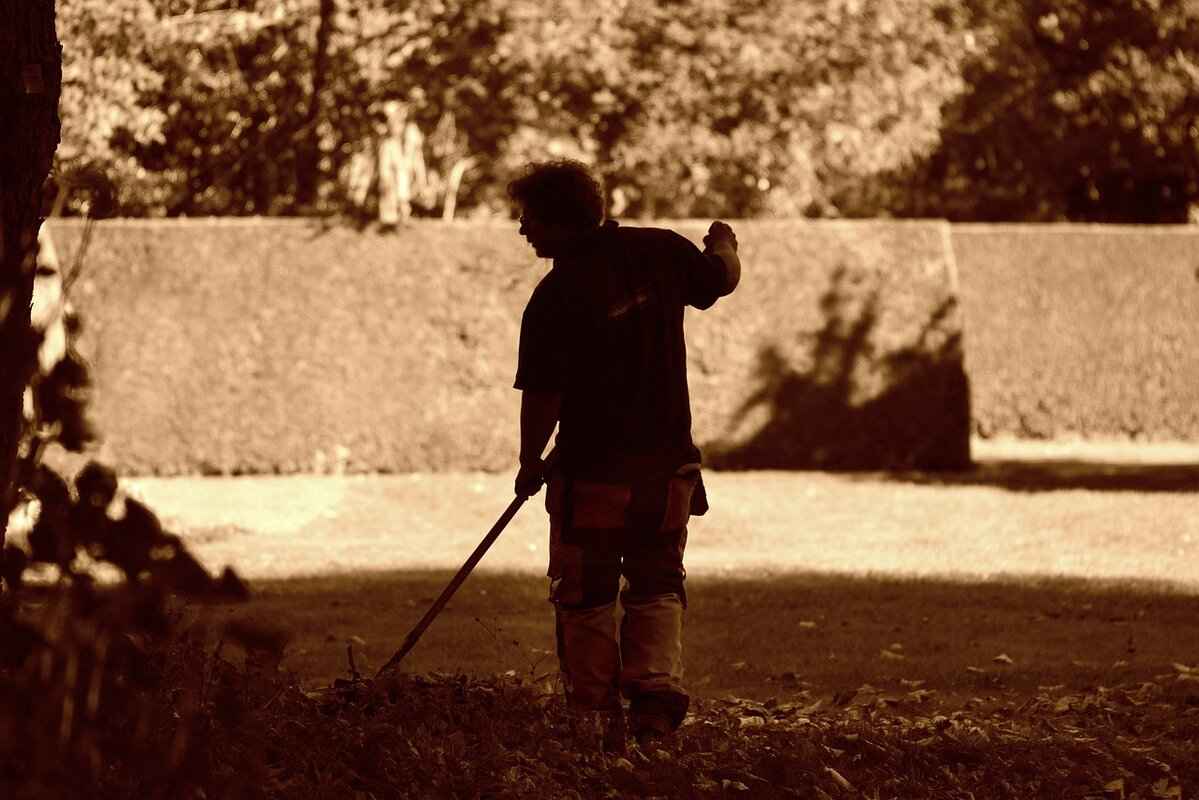
How to Prevent Leaves from Accumulating
Maintaining a clean and attractive lawn is essential for any homeowner, especially when it comes to artificial grass. Prevention is key to minimizing leaf buildup, which can detract from the aesthetic appeal and functionality of your lawn. In this section, we will explore effective strategies to help you keep your artificial grass free from leaves and debris.
One of the most effective ways to prevent leaves from accumulating on your artificial grass is through regular maintenance. Setting a schedule for lawn care can significantly reduce the number of leaves that settle on your lawn. Aim to check your lawn weekly during the fall months when leaves are most likely to fall.
Consider your landscaping choices when planning your yard. Planting trees or shrubs that naturally shed less foliage can help minimize leaf litter. Additionally, positioning these plants away from your artificial grass can reduce the amount of debris that falls onto the lawn. Opt for low-maintenance plants that are less likely to contribute to leaf buildup.
When the weather forecast predicts heavy winds or storms, using a protective cover for your artificial grass can be a great preventive measure. These covers can shield your lawn from falling leaves and other debris, making cleanup easier after adverse weather conditions. Ensure the cover is breathable to prevent moisture buildup.
If your artificial grass is near trees, consider installing leaf guards or mesh netting. These barriers can catch leaves before they reach your lawn, significantly reducing the amount of debris that settles on the grass. Make sure to choose durable materials that can withstand outdoor conditions.
Designate specific areas in your yard as leaf-free zones. This could involve keeping pathways or play areas clear of leaves. Use landscaping rocks or mulch in these zones to deter leaves from accumulating. By creating defined spaces, you can make it easier to manage leaf litter.
Keeping your trees and shrubs well-trimmed can significantly reduce leaf drop. Regular maintenance prevents branches from overhanging your artificial grass and dropping foliage. Schedule a trimming session at least twice a year to keep plants healthy and minimize debris.
When purchasing artificial grass, opt for high-quality products designed to resist leaf accumulation. Some brands offer grass with features that minimize leaf buildup, making maintenance easier. Research and choose a product that suits your needs while providing a beautiful lawn.
Finally, educating your family and neighbors about the importance of maintaining a clean lawn can help in the prevention of leaf accumulation. Encourage them to participate in yard clean-up days or share tips on keeping their lawns tidy. A community-focused approach can enhance the overall appearance of your neighborhood.
By implementing these preventive measures, you can significantly reduce leaf buildup on your artificial grass, ensuring it remains clean and visually appealing. Regular maintenance, strategic landscaping, and community involvement are all key components of maintaining a beautiful lawn.

Cleaning Solutions for Stains and Debris
Cleaning artificial grass is essential to maintain its aesthetic appeal and longevity. One common issue that many homeowners face is the presence of stains and debris, often left behind by leaves and other organic materials. In this section, we will explore effective cleaning solutions that are safe for artificial grass, ensuring that your lawn remains pristine without causing any damage.
When leaves decompose, they can leave behind unsightly stains or debris that can affect the overall appearance of your artificial grass. To tackle these issues, it is crucial to use the right cleaning methods and solutions. Below, we outline various approaches that can help you restore your lawn’s beauty.
One of the simplest and most effective methods for cleaning artificial grass is to use a mixture of water and mild detergents. Here’s how to do it:
- Mixing the Solution: Combine a small amount of mild detergent with warm water in a spray bottle or bucket. Avoid harsh chemicals, as they can damage the grass fibers.
- Application: Spray the solution onto the stained area and let it sit for a few minutes. This allows the detergent to penetrate the stain.
- Scrubbing: Use a soft-bristle brush to gently scrub the area. Be careful not to apply too much pressure, as this can damage the grass.
- Rinsing: Rinse the area thoroughly with clean water to remove any detergent residue.
There are several commercial cleaning products specifically designed for artificial grass. These products are formulated to effectively remove stains without harming the grass. Here are some points to consider:
- Product Selection: Look for products labeled as safe for synthetic turf. Read reviews and check for recommendations from trusted sources.
- Application Instructions: Follow the manufacturer’s instructions carefully. Most products require you to spray the solution on the affected area and allow it to sit for a specified time before rinsing.
- Spot Testing: Before applying any commercial cleaner, perform a spot test in a small, inconspicuous area to ensure it does not discolor the grass.
If you prefer a more eco-friendly approach, consider using natural cleaning solutions. Here are a few options:
- Baking Soda: Sprinkle baking soda on the stained area and let it sit for 15-20 minutes. Then, scrub gently and rinse with water.
- Vinegar Solution: Mix equal parts of white vinegar and water in a spray bottle. Spray on the stain and scrub lightly before rinsing.
- Lemon Juice: The acidity in lemon juice can help break down stains. Apply it directly to the stain, let it sit, and then rinse thoroughly.
In conclusion, keeping your artificial grass clean is vital for its appearance and longevity. By using the right cleaning solutions, whether they are mild detergents, commercial products, or natural alternatives, you can effectively remove stains and debris without damaging the turf. Regular maintenance will ensure your lawn looks vibrant and inviting throughout the year.
Using Water and Mild Detergents
Cleaning artificial grass is essential for maintaining its appearance and longevity. One effective method involves using water and mild detergents. This section will guide you on how to mix and apply these cleaning solutions safely, ensuring that your artificial grass remains undamaged and looks pristine.
Artificial grass is made from synthetic fibers that can attract dirt, debris, and stains over time. Using the right cleaning solutions is crucial to avoid damaging the grass while effectively removing unwanted substances. Mild detergents are specially formulated to clean without harsh chemicals, making them ideal for this purpose.
To create a safe and effective cleaning solution, follow these steps:
- Gather your materials: You will need a bucket, a mild detergent (such as dish soap), and warm water.
- Mix the solution: In a bucket, combine one tablespoon of mild detergent with one gallon of warm water. Stir gently to create a soapy mixture.
- Test the solution: Before applying it to the entire lawn, test a small, inconspicuous area to ensure it does not cause discoloration or damage.
Once your cleaning solution is ready, it’s time to apply it to the artificial grass:
- Pre-cleaning: Remove any loose debris, such as leaves or twigs, using a leaf blower or rake.
- Application: Using a spray bottle or garden sprayer, evenly distribute the cleaning solution over the affected areas of the artificial grass. Avoid soaking the grass excessively.
- Scrubbing: For stubborn stains, use a soft-bristle brush to gently scrub the area. Be careful not to damage the fibers.
- Rinsing: After scrubbing, rinse the area thoroughly with clean water to remove any soap residue. This step is crucial as leftover detergent can attract more dirt.
After rinsing, allow the artificial grass to air dry. If possible, use a leaf blower to help remove excess water and speed up the drying process. This will help maintain the grass’s structure and prevent mold or mildew growth.
To ensure the longevity of your artificial grass, consider the following tips:
- Frequency of cleaning: Regularly clean your artificial grass to prevent buildup of dirt and stains. Aim for a thorough cleaning every few months.
- Choose the right detergent: Always opt for mild, biodegradable detergents that are safe for synthetic materials.
- Avoid harsh chemicals: Steer clear of bleach or ammonia-based cleaners as they can cause irreversible damage to the grass fibers.
By following these guidelines, you can effectively clean your artificial grass using water and mild detergents without causing any harm. This method not only helps maintain the aesthetic appeal of your lawn but also contributes to its overall longevity.
Commercial Cleaning Products
When it comes to maintaining the pristine appearance of your artificial grass, can be invaluable. These specially formulated solutions are designed to tackle the unique challenges posed by synthetic lawns, ensuring they remain clean, vibrant, and free from debris. In this section, we will explore some of the best options available on the market, highlighting their features and benefits.
Artificial grass requires care that is distinct from natural grass. While DIY solutions can sometimes suffice, offer targeted formulations that effectively address specific issues such as stains, odors, and debris buildup. These products are designed to maintain the integrity of the grass fibers while providing thorough cleaning.
- Evergreen Artificial Grass Cleaner: This biodegradable cleaner is safe for pets and children, making it an excellent choice for households. It effectively removes dirt, stains, and odors without damaging the grass.
- PetSafe Artificial Grass Cleaner: Specifically formulated to neutralize pet odors and stains, this cleaner is ideal for homes with furry friends. Its powerful enzymatic formula breaks down waste and leaves your lawn smelling fresh.
- Artificial Grass Maintenance Spray: This product not only cleans but also conditions the grass fibers, helping to keep them looking new. It is particularly effective at removing stubborn stains and enhancing the overall appearance of your lawn.
- Greenway Artificial Grass Cleaner: An eco-friendly option, this cleaner uses natural ingredients to tackle dirt and grime. It is suitable for all types of artificial grass and is safe for the environment.
To maximize the effectiveness of these products, follow these general guidelines:
- Read the Instructions: Always start by reading the manufacturer’s instructions to ensure proper application.
- Test a Small Area: Before applying the cleaner to the entire lawn, test it on a small, inconspicuous area to check for any adverse reactions.
- Apply Evenly: Use a spray bottle or a garden sprayer to apply the cleaner evenly across the surface of the grass.
- Allow to Sit: Let the cleaner sit for the recommended time to effectively break down stains and odors.
- Rinse Thoroughly: After the appropriate time has passed, rinse the area thoroughly with water to remove any residue.
Utilizing commercial cleaning products offers several advantages:
- Efficiency: These products are designed to work quickly and effectively, saving you time and effort.
- Specialized Formulas: Many products are tailored for specific issues, such as pet stains or heavy debris, providing targeted solutions.
- Safety: Most commercial cleaners are formulated to be safe for pets and children, allowing you to maintain a healthy environment.
- Enhanced Longevity: Regular use of quality cleaning products can extend the life of your artificial grass, keeping it looking new for years.
In summary, investing in for your artificial grass is a smart decision. Not only do they simplify the cleaning process, but they also ensure that your lawn remains in optimal condition, enhancing its aesthetic appeal and longevity.
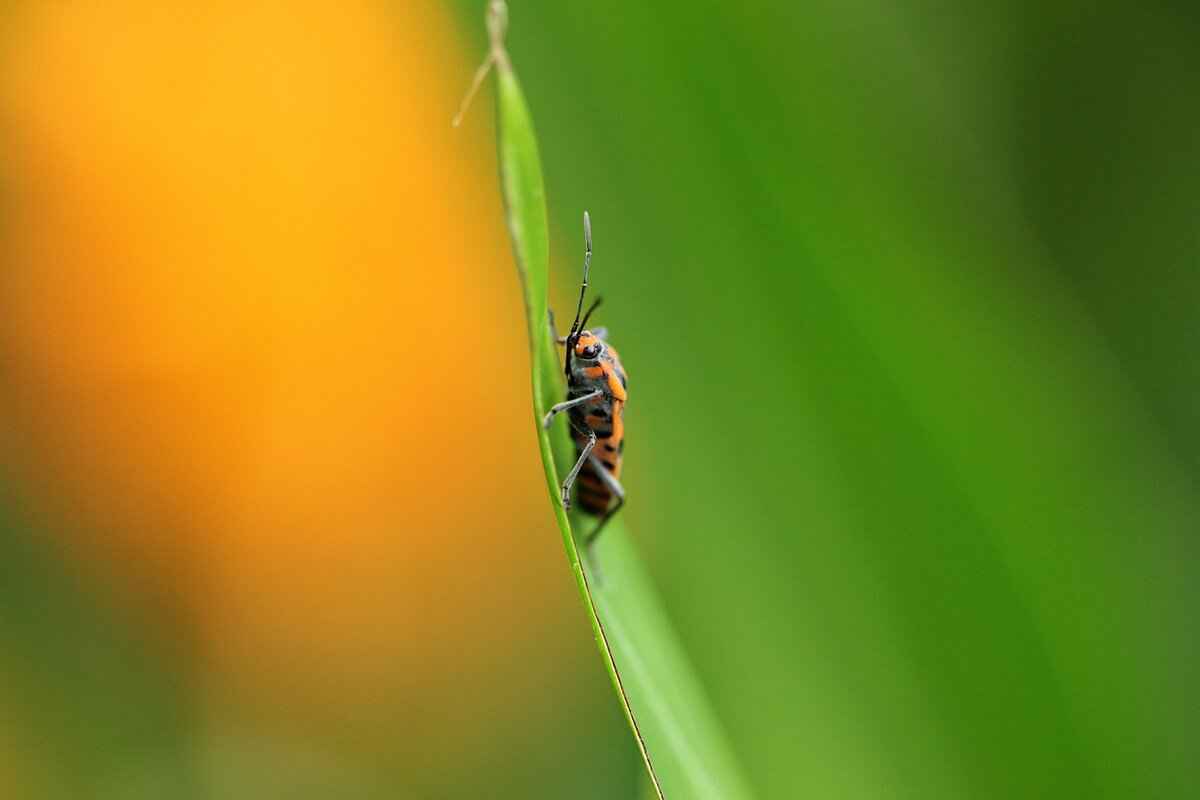
Seasonal Maintenance Tips for Artificial Grass
Artificial grass is a fantastic alternative to natural lawns, providing a lush, green appearance year-round with minimal maintenance. However, the changing seasons can significantly impact how leaves accumulate on your artificial turf. Understanding the seasonal dynamics is essential for maintaining the pristine look of your lawn. Below are tailored maintenance tips for each season to ensure your artificial grass remains in top condition.
- Spring: As trees begin to bloom, you may find an increase in leaf litter. Regularly using a leaf blower or a soft-bristled broom can help clear away leaves without damaging the grass fibers. Additionally, consider rinsing the turf with water to wash away pollen and debris, promoting better drainage and preventing mold growth.
- Summer: During the hot months, your artificial grass is subjected to intense sunlight and heat. While leaf accumulation may be less, it’s crucial to keep the surface clean. Use a leaf blower to remove any fallen leaves quickly. This season is also ideal for checking for any signs of wear or damage, ensuring that your lawn stays vibrant and functional.
- Autumn: This season brings a significant amount of falling leaves, which can quickly accumulate on your artificial grass. To manage this, establish a regular cleaning schedule. A combination of raking and using a leaf blower will be most effective. Be proactive to prevent leaves from becoming wet and compacted, which can lead to mold and mildew issues.
- Winter: Winter can be tricky, especially in areas with snowfall. While snow can act as a natural insulator, it’s important to clear any leaves that may have fallen before the snow arrives. Use a plastic shovel to gently remove any snow accumulation, which can help prevent ice formation. Avoid using metal shovels, as they can damage the grass fibers.
In addition to these seasonal tips, it’s beneficial to perform a thorough inspection of your artificial grass at least twice a year. Look for any signs of wear, such as thinning fibers or uneven surfaces. Regular maintenance not only enhances the appearance of your lawn but also extends its lifespan.
By following these seasonal maintenance tips, you can ensure that your artificial grass remains beautiful and functional throughout the year. Remember, a little effort during each season can go a long way in preserving the integrity and appearance of your artificial lawn.
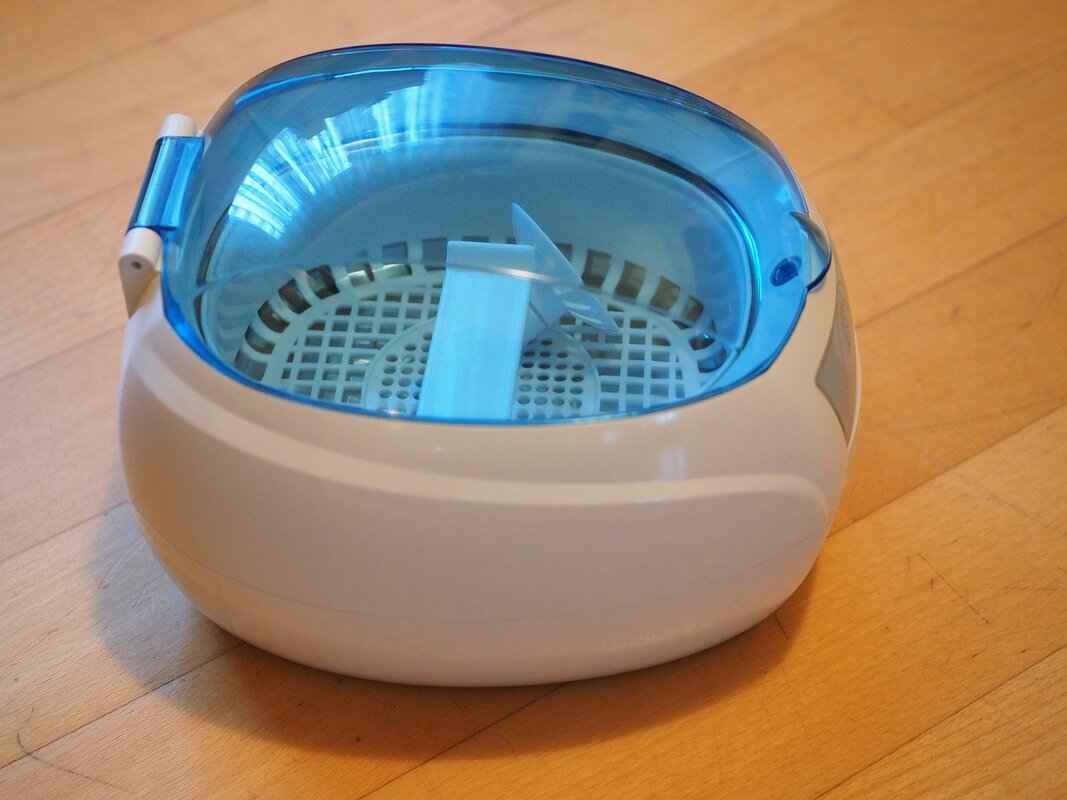
Signs Your Artificial Grass Needs Professional Cleaning
Maintaining artificial grass is crucial for its longevity and appearance. While regular cleaning is essential, there are specific signs that indicate when it’s time to call in the professionals. Understanding these signs can help you preserve the integrity of your lawn and ensure it remains a beautiful outdoor space.
- Persistent Odors: If you notice unpleasant smells emanating from your artificial grass, it could be a sign of trapped debris or organic matter. These odors can be a breeding ground for bacteria and pests. Professional cleaning can effectively eliminate these odors, ensuring a fresh and inviting environment.
- Stains and Discoloration: Over time, artificial grass can develop stains from various sources, including food, pet waste, or environmental factors. If these stains persist despite regular cleaning efforts, it may be time to seek professional help. Experts use specialized cleaning solutions that can restore the original color and vibrancy of your grass.
- Uneven Wear and Tear: If you observe areas of your artificial lawn that look worn or flattened, this could be due to improper cleaning techniques or heavy foot traffic. Professionals can assess the situation and use techniques to rejuvenate the fibers, restoring the uniformity of your grass.
- Accumulation of Debris: Leaves, dirt, and other debris can accumulate over time, especially in areas with heavy foliage. If you find that manual cleaning methods are no longer effective, calling in professionals can help remove stubborn debris and prevent future buildup.
- Increased Allergies or Irritation: If you or your family members start experiencing increased allergies or skin irritation when using your artificial grass, it may be due to allergens or contaminants trapped within the fibers. Professional cleaning can help eliminate these irritants, making your lawn safer for everyone.
- Visible Mold or Mildew: In damp climates, mold or mildew can develop on artificial grass. This not only affects the appearance but can also pose health risks. If you notice any signs of mold, it’s crucial to call in professionals who can treat the area effectively and prevent future growth.
- Infrequent Maintenance: If you’ve neglected your artificial grass maintenance for an extended period, it’s wise to consult professionals. They can provide a thorough cleaning and maintenance service that can bring your lawn back to life.
In summary, being aware of these signs can help you determine when it’s time to seek professional cleaning services for your artificial grass. Regular maintenance is essential, but recognizing when professional intervention is needed ensures that your lawn remains in optimal condition, enhancing both its aesthetic appeal and functional longevity. By addressing these issues promptly, you can enjoy a vibrant and well-maintained artificial lawn for years to come.
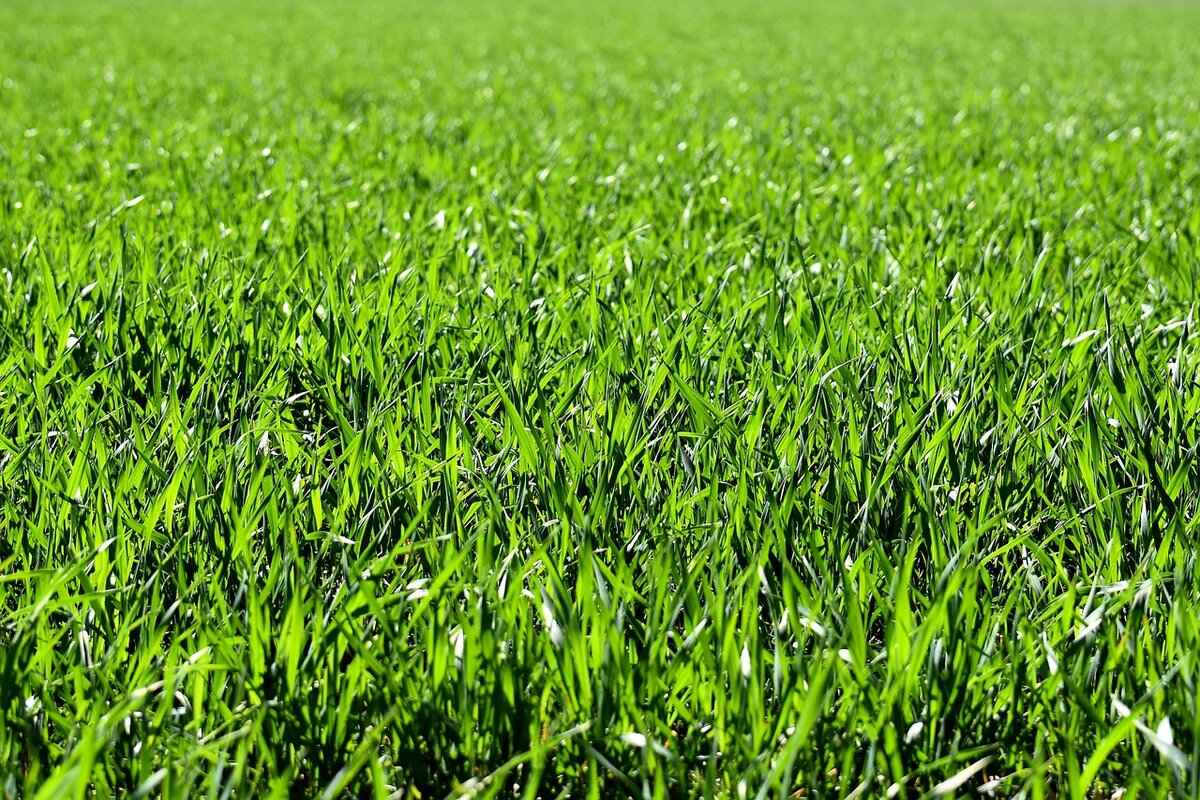
Conclusion: Maintaining Your Artificial Grass
Maintaining artificial grass is crucial for ensuring that it continues to look vibrant and functions effectively over time. This involves more than just occasional cleaning; it requires a consistent approach to care and maintenance. By implementing the right strategies, homeowners can enjoy a beautiful lawn that enhances their outdoor space. Below, we delve into the essential aspects of maintaining your artificial grass.
To keep your artificial grass in optimal condition, regular cleaning is fundamental. Accumulation of debris, dirt, and organic materials can lead to discoloration and unpleasant odors. Here are some effective cleaning practices:
- Weekly Raking: Use a plastic rake to gently lift leaves and debris without damaging the grass fibers.
- Hose Down: Rinse the surface with a hose to remove dust and smaller particles.
- Spot Cleaning: For stains or spills, use a mixture of water and mild detergent to clean the affected area.
Artificial grass is typically made from synthetic fibers designed to mimic the appearance of natural grass. Understanding its composition is essential for choosing the right cleaning methods. Most artificial grass products consist of:
| Material | Function |
|---|---|
| Polyethylene | Soft texture and realistic appearance |
| Polypropylene | Durability and resistance to wear |
| Nylon | High resilience and heat resistance |
Regular maintenance of artificial grass not only enhances its aesthetic appeal but also extends its lifespan. Here are some of the key benefits:
- Improved Hygiene: Regular cleaning prevents the buildup of bacteria and allergens.
- Longevity: Consistent care helps maintain the integrity of the fibers.
- Visual Appeal: A well-maintained lawn enhances the overall look of your property.
Using the right tools can significantly improve the efficiency of your cleaning efforts. Essential tools include:
- Leaf Blower: Ideal for quickly removing leaves without damaging the grass.
- Plastic Rake: Gentle on the fibers while effectively collecting debris.
- Garden Hose: Useful for rinsing down the surface and removing dirt.
Prevention is key to maintaining a clean lawn. Here are some strategies to minimize leaf buildup:
- Regular Trimming: Keep nearby trees and shrubs trimmed to reduce falling leaves.
- Strategic Landscaping: Consider planting leaf-shedding trees away from your artificial grass area.
- Using Barriers: Installing physical barriers can help block leaves from blowing onto your lawn.
Different seasons bring varying challenges for artificial grass maintenance. Here are some seasonal tips:
- Spring: Conduct a thorough cleaning to remove winter debris.
- Summer: Regularly rinse to prevent dust accumulation and maintain coolness.
- Autumn: Increase leaf removal efforts as trees shed their leaves.
- Winter: Clear snow and ice promptly to prevent damage to the grass fibers.
In conclusion, maintaining artificial grass requires a proactive approach that includes regular cleaning, understanding its composition, and using the right tools. By following these practices, homeowners can enjoy a beautiful and functional lawn for years to come.
Frequently Asked Questions
- How often should I clean my artificial grass?
It’s best to clean your artificial grass regularly, ideally once a week, to prevent debris buildup and maintain its appearance. However, during autumn or windy seasons, you might need to clean it more frequently.
- Can I use a regular vacuum cleaner on artificial grass?
While some vacuum cleaners can be used, it’s generally not recommended. A leaf blower or a specialized artificial grass rake is more effective and safer for your lawn.
- What cleaning solutions are safe for artificial grass?
Water mixed with mild detergents is usually safe for cleaning artificial grass. Be sure to avoid harsh chemicals that could damage the fibers.
- Are there specific tools I need for cleaning artificial grass?
Yes! Essential tools include a leaf blower, a soft-bristled broom, and a rake designed for synthetic grass. These tools help maintain the integrity of your lawn while keeping it clean.
- How can I prevent leaves from accumulating on my artificial grass?
To minimize leaf buildup, consider trimming nearby trees and using barriers like fences or hedges. Regular maintenance will also help keep your lawn looking pristine.






